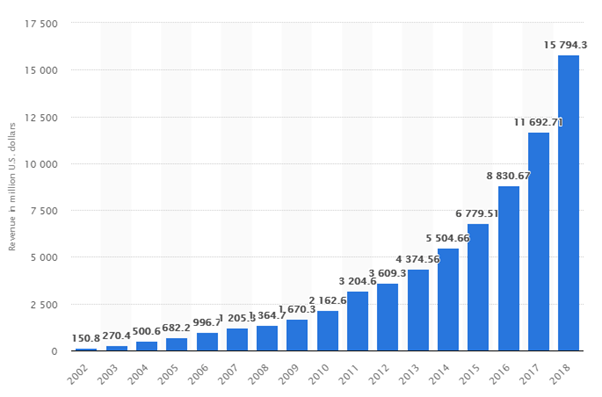We are sending out a warm welcome to Filipe Sá, our new Head of Data Analytics.
Here’s to a great start and an exciting journey ahead.
Time for another healthy dose of gloating about our people. This time, we called on Filipe Augusto Sá, our new Head of Data Analytics, who was happy to share his love of data.
Let us introduce him.
Meet Filipe
Filipe is a loving dad of three, a WWII buff, and a Google Cloud Platform enthusiast. When he’s not busy at home with his family, Filipe looks for new challenges in the world of data. But often, the two worlds collide.

“The first time I explained to my daughter what my job is she was in the car, browsing the internet on her cell phone, and she noticed that there were commercials she liked. Then she asked: ‘Gee, how do they know I like these things?’ I explained to her that Google kept the searches she did and that it ‘learned’ her tastes and then showed her everything related to her previous searches. I took the opportunity and said that this is one thing that my work allowed me to do.”
Grown-ups have a lot of questions about data as well. Such as, what is it exactly? Or, how much is it worth? And what can you do with it?
Data Analytics, explained
Filipe offers a simple yet profound definition for his life’s work: “Data Analytics is the exploration of all available data, whether or not structured, to deepen our understanding, extracting knowledge and plan actions that generate results.”
Since Filipe is a die-hard fan of data, we couldn’t help but ask if he could put the value of data into a few big numbers. He definitely could: “Google estimates that humanity has created in the last 5 years, the equivalent of 300 exabytes of data or 300,000,000,000,000,000,000 bytes of data. And the production of this data doubles every 2 years. The challenge is knowing how to get the most information out of this data.”
And that, according to Filipe, is where most business leaders still struggle. So, how important is data to companies? And what transformations can data bring about to existing businesses? Once again, Filipe answered swiftly and with figures, “6 out of 10 companies founded today will be out of business in 5 years. And the main reason for this is that leadership is not data driven.”
Leading the charge on Data Analytics
For those businesses that prioritize Data Analytics, the benefits are significant. Pattern identification, greater understanding of activities, automated systems, and simply better decision making are just some of the major benefits highlighted by Filipe as he thinks about examples everyone can relate to:
“Netflix, with its predictive analytical models, could define specific characteristics for its new productions, such as genre, plot and cast. They can even predict how many and which users are more inclined to like and consume each release. This way, the company serves various niche audiences, leaving its users satisfied and increasing loyalty to the platform.”
Netflix’s annual revenue from 2002 to 2018

And big tech companies are not alone in this. “Nike is another example of a company that has realized how to leverage social media data. Nike launched a running app that was widely publicized. Using this application, the brand got important data from the audience and the information needed to improve the products. With more effective data mining, every company can find ‘gems’ (information) that will improve the company’s business even more.”
Filipe is happy to illustrate further, with examples from a well-known logistics provider. “The logistics company UPS (United Parcel Service) began using technology to optimize delivery routes. By cross-referencing vehicle sensor data, map information and customer order requirements, it reduced an incredible 136 million km driven per year.”
But perhaps the most striking example of the importance of data comes from a traditional brick and mortar retailer. “Before the doors open daily at each of Zara’s 2,213 locations worldwide, employees and managers share details of the previous day, about items returned by customers, feedback from buyers, as well as trends the team has noticed. Analysts release daily updates and use them to paint an accurate picture of exactly what Zara’s customers are demanding. A vast team of over 300 in-house designers quickly translates this information into tangible projects that comply with fashion trends, and, in 21 days, the new item is available for sale. While most fast-fashion brands try to anticipate what customers want, Zara wins the trend by getting customer feedback.”
Surely, large organizations like Nike are better poised to reap the benefits of data mining? Not so fast, cautions Filipe. “Nowadays, because of competition and the growing digital world, a company can only grow and consolidate if it is based on data. For a company starting today, my advice is to take good care of your data, for it can be the major factor that drives failure.”
Where is Data Analytics headed?
With all the buzz around Data Analytics, it is easy to mistake the major trends for flights of fancy. For Filipe, however, his priorities are clear, and the future is already here.
“About 90% of all data in existence was generated in the last 2 years and it doubles every 2 years. So the ideal is to think about the ‘future’ right now, as the number of companies with the presence of Data Analytics platforms is increasing. Especially those who want more assertive information from Artificial Intelligence and Machine Learning, or even both together for a better understanding of the data.”
A Gartner study backs Filipe’s conclusions. According to the report, data and analytics are quickly shifting to become a core function. However, business leaders often underestimate the complexities of data and end up missing opportunities. If chief data officers (CDOs) are involved in setting goals and strategies, they can increase the production of business value by a factor of 2.6 times.
The reality for most business users today, however, is still pre-defined dashboards, manual data mining and excel sheets. Filipe says this can lead to incorrect conclusions, faulty decisions, and actions. “Time spent on dashboards will be progressively replaced as users’ needs are addressed with automated insights and dynamically generated customized through a pre-defined dashboard.”
Digital transformation requires increasingly faster and more assertive information. But to make the most of these opportunities, you need a skilled Data Analyst. But what does that mean exactly?
What does a Data Analyst do?
We talked about what is Data Analytics and its importance, but we wanted to go deeper into what a Data Analyst actually does and it what it takes to become one.
“You need to be curious and creative to be a successful Data Analyst. That’s what allows you to find a diamond in the rough (data) and transform it into a gemstone (Information). For this, he first needs to be curious to understand the data well and be able to transform it into something that can be easily visualized, you also need to be creative, as the way you show results can lead to new insights and create a world of possibilities.”
A successful Data Analytics also needs some hard skills in his or hers tool belt: “Technically, you must have very good analytical power, have expert knowledge of specific programming languages such as SAS, R, Python. I would also highlight the use of BI tools such as Tableau, PowerBI or DataStudio.”
These soft and hard skills are part of every project team here at Near Partner!
Our approach to a Data Analytics project
When you have the data but don’t know what to do with it, it’s worthless. According to Filipe, there are 4 vital steps to any Data Analytics project that will transform raw data into useful information:
- Define the opportunity/need/problem–At this stage, says Filipe, it is important to ask “What happened? What is the problem? What do I want to find? What is our objective?”
- Select the data–The next step is to select which data is available inside or outside the organization that could help with the research
- Select the model most adhering to the need–choosing the most adequate model is a big part of the solution, says Filipe
- Generate reports and dashboards from the analysis – In this step, the creativity of a Data Analyst is extremely important, because “a well-done report or dashboard can generate insights beyond expectations.”
Working at Near Partner
Looking for a place to enhance your Data Analyst skills? Filipe came to Near Partner looking “to learn, for new challenges, and to meet an exciting team”.
But don’t just take Filipe’s word. Jean Lelis has recently joined our team and for him, “the culture is one of continuous development in order to have well-trained, motivated professionals with excellent technical skills”. Indira Sanches highlights what for her makes Near Partner: “I feel I have a voice and that I can contribute to its success.”
Nuno Dias breaks down our company culture: “We believe that good people, left at ease to work within the frame of the company’s culture, will do good things for customers, colleagues, and the company. That’s the Near Partner way.”
If you’d like to know what it feels to work with an expert team in laid-back environment, reach out. We have a spot for you.





